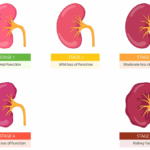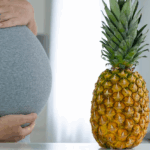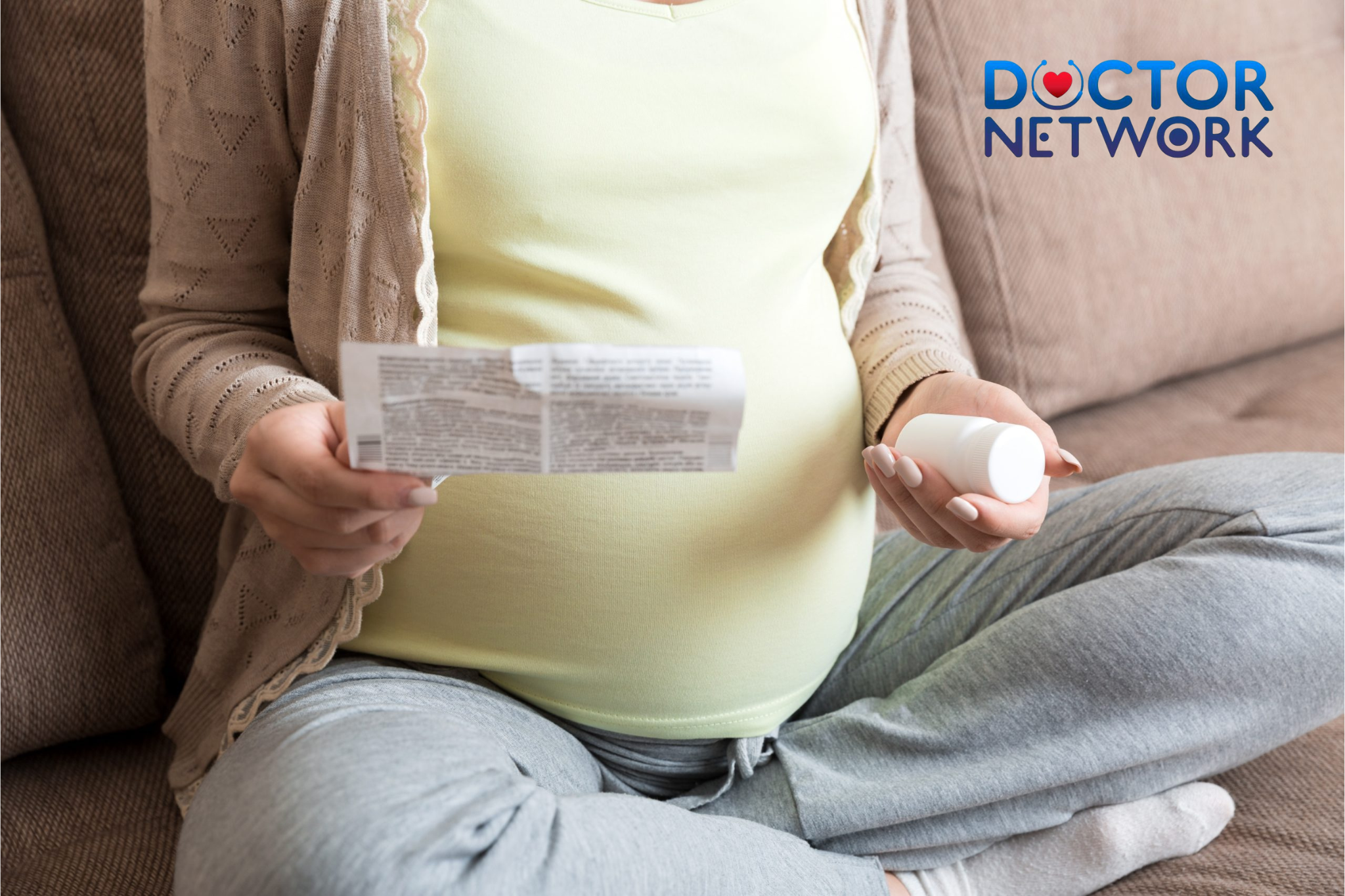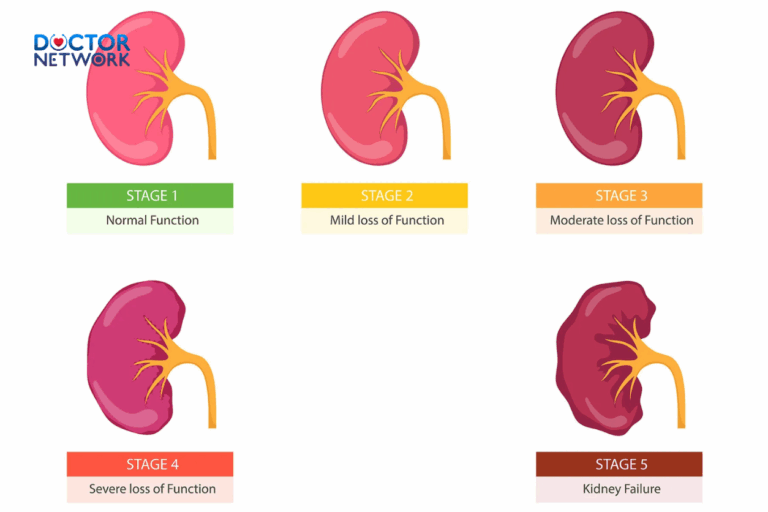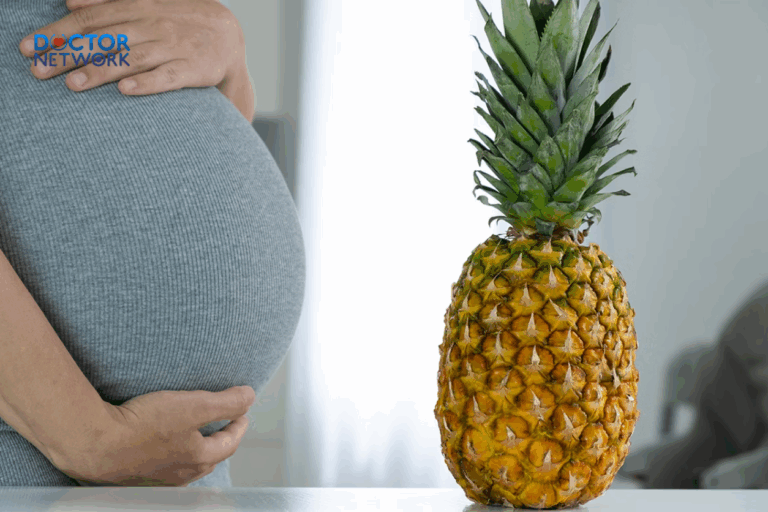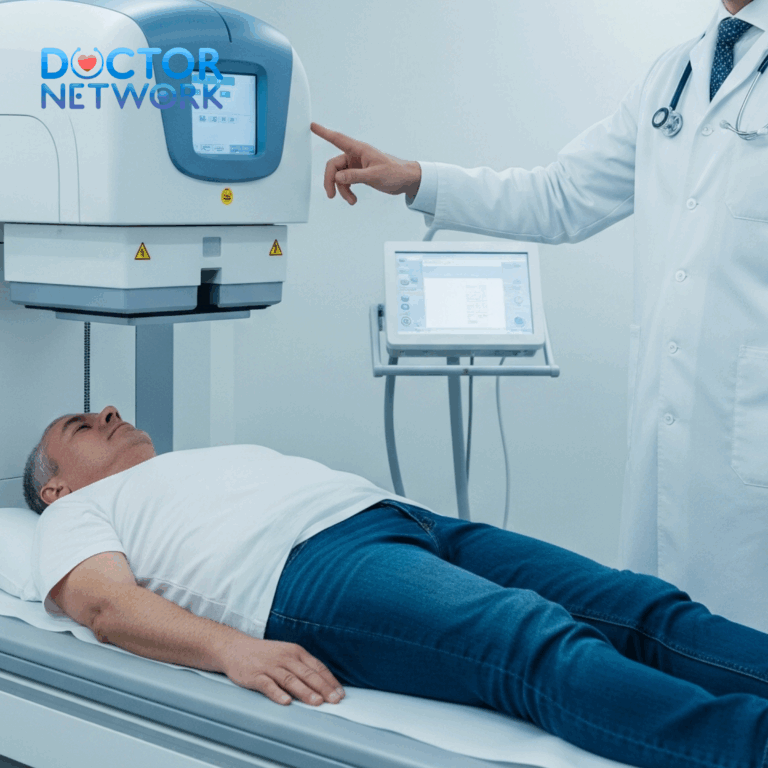When Can I Start Bending After C-Section? – Caring for a newborn while recovering from a cesarean section presents unique challenges, particularly when simple movements like bending over feel impossible. A C-section is major abdominal surgery that requires careful, methodical recovery to prevent complications and ensure proper healing. This comprehensive guide provides essential information about the timeline for safe bending after cesarean delivery, proper techniques to protect your incision, practical alternatives to avoid bending entirely, warning signs of complications, and evidence-based recovery strategies. Understanding when and how to safely resume bending activities is crucial for new mothers navigating the delicate balance between caring for their baby and protecting their surgical recovery.
Understanding C-Section Recovery and Why Bending is Critical
What Happens During a C-Section?
Cesarean delivery involves creating an incision through multiple layers of abdominal tissue to safely deliver your baby. The surgical procedure requires cutting through skin, subcutaneous fatty tissue, fascia (connective tissue covering muscles), peritoneum (membrane lining the abdominal cavity), and finally the uterine wall. Contrary to common belief, abdominal muscles are typically separated rather than cut during the procedure, though this still creates significant tissue trauma. After your baby’s delivery, each layer is carefully sutured closed in reverse order, creating a complex wound that requires weeks to heal properly.
Why is Bending Over After a C-section So Critical/Unsafe?
Bending at the waist places direct pressure and mechanical strain on your healing incision site, potentially compromising the delicate tissue repair process. During the early postpartum period, this movement increases intra-abdominal pressure, which can stretch healing tissues beyond their capacity and intensify pain significantly. The combination of surgical pain, medication effects, and postpartum dizziness makes bending particularly hazardous in the initial recovery phase. Most critically, excessive strain on your incision carries the risk of separating external sutures or internal tissue closures, leading to serious complications like wound dehiscence or hernia formation.
Timeline for C-Section Recovery & When You Can Start Bending
General C-Section Recovery Timeline
| Recovery Phase | Timeframe | Physical Capabilities | Bending Guidelines |
|---|---|---|---|
| Immediate Recovery | First 24-48 hours | Hospital stay, pain management, limited mobility | Absolutely no bending or lifting |
| Early Recovery | First week | Continued pain, very limited activity | Avoid all bending at the waist |
| Initial Healing | 2-4 weeks | Decreasing pain, increasing mobility | Still avoid bending when possible, no lifting heavier than baby |
| Progressive Recovery | 4-6 weeks | Continued healing, increasing strength | Some careful bending may be possible with proper technique |
| Milestone Recovery | 6-8 weeks | Healthcare provider clearance for normal activities | Careful bending typically approved after medical evaluation |
| Extended Recovery | 3-6 months | Internal healing continues, scar maturation | Gradual return to most activities with mindful technique |
When Can I Start Bending Specifically?
The definitive answer is to avoid bending at the waist for at least 4-6 weeks following your cesarean delivery. During the first two weeks postpartum, minimize bending entirely as your incision remains most vulnerable to complications. Focus on utilizing assistive devices, asking for help, and modifying your environment to eliminate bending needs. Between weeks 2-4, limit bending to absolutely necessary situations only, ensuring you bend from your knees while supporting your incision and moving deliberately slowly.
From weeks 4-6, gradually introduce careful bending movements, primarily using knee-bending techniques rather than waist flexion. Avoid quick or repetitive bending motions, and consistently listen to your body’s signals. After six weeks, most women receive medical clearance from their healthcare provider during routine follow-up appointments, though individual recovery timelines vary significantly. Some mothers require additional healing time before safely resuming normal bending activities.
Factors Influencing Healing Rate
Several variables significantly impact your recovery timeline and bending readiness. Individual healing differences mean some women recover faster while others need extended time. Complications such as surgical site infections can substantially delay healing and prolong bending restrictions. Pre-existing health conditions like diabetes or obesity often slow tissue repair and require modified recovery approaches.
Women who have undergone multiple cesarean deliveries typically experience longer healing times due to scar tissue formation and weakened abdominal wall integrity. Attempting excessive activity too soon—including premature bending, lifting, or exercising—can significantly setback recovery progress. Additionally, vertical C-section incisions generally require longer healing periods compared to horizontal (bikini line) incisions due to increased muscle involvement and tension on the wound.
Progression of Physical Sensations
Understanding how your incision and core should feel throughout recovery helps gauge appropriate bending readiness:
Weeks 0-2: Expect sharp, intense pain with any movement, significant pulling or stretching sensations, and an overall feeling of physical fragility. Your abdominal muscles feel completely disconnected and unstable.
Weeks 2-4: Pain intensity decreases but remains present during movement. You may experience uncomfortable pulling sensations with position changes, transitioning from sharp pain to generalized discomfort around the incision site.
Weeks 4-6: Overall discomfort continues decreasing, though you might notice tightness, tingling, or pulling sensations with certain movements or when fatigued. Your core begins feeling more stable and connected.
After 6 weeks: Physical sensations lessen significantly, with primary feelings being numbness or heightened sensitivity along the scar line. Normal movement typically produces minimal pulling or stretching discomfort.
Remember that this timeline represents general expectations, and individual experiences vary considerably based on multiple factors.
Safe Ways to Bend After C-Section
Proper Bending Technique (When Cleared by Provider)
Master the squat technique instead of traditional waist bending. Position your feet shoulder-width apart, bend your knees, and lower your body while maintaining a straight back throughout the movement. Engage your leg muscles rather than relying on abdominal strength, which remains compromised during early recovery.
Support your incision site using your hand or an abdominal binder during any bending movement. Move slowly and deliberately, avoiding quick or jerky motions that can strain healing tissues. Practice proper breathing technique by exhaling as you bend down and inhaling as you return to standing. Never hold your breath during movement, as this increases intra-abdominal pressure and stresses your incision.
Avoiding Bending & Making Life Easier
Alternatives to Bending
Transform your daily routine to eliminate bending needs entirely. Sit down in chairs to reach lower items, put on shoes, or pick up objects from the floor. Invest in a grabber tool (reacher) to retrieve items without bending—choose models with comfortable grips and appropriate length for your needs.
Consistently ask family members and friends for assistance with tasks requiring bending. Raise frequently used items to waist height, including baby supplies, personal care items, and household necessities. When necessary, kneel down on both knees rather than bending from your waist, as this position places less strain on your healing incision.
Caring for Your Baby Without Bending
Diaper Changes: Set up changing stations at waist height using a standard changing table or dresser-top changing pad. Alternatively, sit in a comfortable chair with your baby on your lap for diaper changes. Organize all necessary supplies within arm’s reach to minimize stretching or reaching movements.
Bathing Baby: Use a kitchen sink or elevated baby bathing tub to avoid bending over a standard bathtub. Enlist your partner’s help for bath time, or sit on a stool beside the tub if bending is unavoidable. Consider sponge baths during early recovery to simplify the process.
Picking Up Baby: Always bring your baby close to your body before lifting. Bend your knees rather than your waist, and use a bedside bassinet or co-sleeper to minimize lifting distance. When your baby is on the floor, kneel down to their level rather than bending over.
Older Siblings: Encourage older children to come up to your level for interaction, hugs, or assistance. Have them climb onto the couch, use a step stool, or sit in chairs to reach you rather than requiring you to bend down to them.
Managing Household Tasks
Laundry: Use a wheeled laundry basket to transport clothes without lifting heavy loads. Delegate the transfer of wet clothes from washer to dryer, and consider having family members handle laundry entirely during early recovery.
Kitchen Work: Rearrange frequently used items to counter height, eliminating the need to reach into lower cabinets. Use a tall stool to sit while preparing meals or cleaning dishes. Delegate tasks requiring floor-level work like loading/unloading the dishwasher’s bottom rack.
Cleaning: Postpone deep cleaning tasks for several weeks, focusing only on essential maintenance. Use long-handled tools like mops and dusters to clean without bending. Accept that your home may not meet your usual standards during recovery—this is temporary and necessary for proper healing.
In-Depth Guide to “Bend-Free” Tools & Strategies
Grabber tools come in various lengths (24-32 inches typical) with different grip mechanisms including trigger handles, squeeze grips, or magnetic tips for metal objects. Choose lightweight models with comfortable, non-slip handles and strong gripping power for reliable use.
Abdominal binders and recovery shorts provide crucial support by applying gentle, consistent pressure to your healing incision. These garments reduce strain during movement, improve posture, and can significantly decrease discomfort when unavoidable bending occurs. Recovery shorts often include additional pelvic floor support beneficial for overall postpartum healing.
Create dedicated “stations” for baby care activities at optimal heights. Set up a feeding station with a comfortable chair, side table for supplies, and footrest. Establish a changing station at waist height with organized supplies. Position a dressing area with baby clothes at convenient reach.
Adapt common household items for easier use: utilize high counters for snack preparation, employ wheeled laundry sorters for transport, use bed tables for activities while sitting, and consider grabber tools with magnetic attachments for picking up metal objects.
The Proactive Role of Partner/Support System
Partners, family members, and friends play essential roles in creating a successful recovery environment. Loved ones should proactively identify tasks requiring bending before the mother attempts them, taking initiative rather than waiting to be asked for help.
Support persons can create a “bend-free” environment by rearranging household items, setting up convenient care stations, and anticipating daily needs. They should take complete ownership of bending and lifting tasks including baby care duties, household chores, and pet care responsibilities.
Most importantly, support systems must encourage the recovering mother to rest and accept assistance without guilt. Recovery is not the time for independence—it’s the time for healing, and accepting help benefits both mother and baby’s long-term wellbeing.
Signs You’re Bending Too Soon & Potential Complications
Signs You’re Bending Too Soon
Monitor your body carefully for warning signs that indicate premature return to bending activities. Increased pain at your incision site following bending attempts signals tissue strain and potential healing disruption. Pulling or stretching sensations around your scar, particularly sharp or intense feelings, indicate excessive stress on healing tissues.
Visual changes around your incision require immediate attention: redness, swelling, warmth, or any opening of wound edges (wound dehiscence) suggest complications. Increased vaginal bleeding beyond normal postpartum flow, especially bright red bleeding, may indicate internal strain or complications.
Feeling unusually exhausted after minimal activity or experiencing sharp, stabbing pain when attempting to bend are clear signals to stop the activity immediately. Any drainage from your incision—whether clear, bloody, or pus-like—requires prompt medical evaluation.
Potential Complications from Bending Too Soon
| Complication | Description | Symptoms | Severity |
|---|---|---|---|
| Wound Dehiscence | Separation of incision edges | Visible opening, increased pain, possible drainage | Serious – requires immediate medical care |
| Delayed Healing | Slower than normal tissue repair | Persistent pain, prolonged tenderness, visible inflammation | Moderate – extends recovery timeline |
| Hernia Development | Weakened abdominal muscles allow tissue protrusion | Visible bulge, pressure sensation, discomfort with activity | Serious – may require surgical repair |
| Surgical Site Infection | Bacterial infection of incision | Fever, redness, warmth, purulent drainage, increasing pain | Serious – requires antibiotic treatment |
| Internal Rupture | Separation of internal sutures | Severe abdominal pain, dizziness, fever, changes in urination | Emergency – requires immediate hospital care |
When to Call Your Doctor
Contact your healthcare provider immediately for increased pain that doesn’t improve with rest or medication, or any visible opening of your incision. Seek prompt medical attention for redness, warmth, swelling, or foul-smelling discharge from your surgical site.
Fever above 100.4°F (38°C) requires immediate evaluation, as does heavy vaginal bleeding or passage of large clots. Severe abdominal pain or cramping, especially if sudden or intense, warrants urgent medical care.
Signs of potential internal rupture constitute medical emergencies: severe abdominal pain, low blood pressure, dizziness, fever, pain with urination or bowel movements, and severe constipation. These symptoms require immediate hospital evaluation.
Strengthening Your Body Safely After C-Section
Early Recovery Exercises (1-4 weeks)
Begin gentle movement within days of delivery to promote circulation and prevent complications. Deep breathing exercises help expand lung capacity, reduce pneumonia risk, and gently engage core muscles without straining your incision.
Start with short walking distances as soon as medically cleared, typically within 24 hours post-surgery. Begin with hallway walks in the hospital, gradually increasing distance and duration at home. Walking promotes healing, prevents blood clots, and helps restore stamina.
Pelvic tilts can begin early in recovery while lying down or sitting. These gentle movements help realign your pelvis, reduce back pain, and begin reconnecting with your core muscles without straining your abdominal incision.
Intermediate Exercises (4-8 weeks)
After healthcare provider approval, typically around 4 weeks postpartum, introduce pelvic floor exercises (Kegels) to restore strength and function. These exercises support recovery from childbirth trauma and help prevent long-term issues like incontinence or pelvic organ prolapse.
Gentle core activation exercises help reconnect your brain with your abdominal muscles. Begin with simple breathing exercises that engage your deep core muscles, progressing to modified planks or gentle abdominal bracing exercises.
Modified wall sits provide safe leg strengthening while supporting your back and avoiding abdominal strain. Start with short holds (10-15 seconds) and gradually increase duration as strength improves.
Advanced Recovery (8+ weeks)
After medical clearance, typically at 6-8 weeks postpartum, consider postpartum-specific exercise programs, ideally guided by a physical therapist specializing in women’s health. These programs address the unique challenges of post-cesarean recovery including scar tissue management, core strengthening, and functional movement restoration.
Functional movement practice becomes crucial for long-term success. Work on proper bending techniques, lifting mechanics, and carrying positions that protect your healing tissues while building strength and confidence.
Gradually increase activity intensity and duration as your strength improves, always listening to your body’s signals and avoiding movements that cause pain or discomfort at your incision site.
Long-Term Core Health and Bending Habits
Continued core strengthening exercises remain important for long-term health, extending well beyond the initial 6-8 month recovery period. Maintaining strong abdominal muscles helps prevent future complications and supports overall functional movement.
Develop lifelong proper bending technique habits to prevent future issues. Even after full recovery, using knee-bending rather than waist-bending reduces back strain and protects your abdominal wall from excessive stress.
Persistent core weakness can lead to chronic back pain, increased hernia risk, and pelvic floor dysfunction. If you experience ongoing weakness, pain, or functional limitations beyond normal recovery timelines, consult a physical therapist specializing in postpartum recovery for specialized long-term support.
Managing Pain & Broader Recovery Support
Managing Pain While Bending
Effective pain management enables safer movement and better recovery outcomes. Take prescribed or over-the-counter pain medications as approved by your healthcare provider, timing doses before planned activities that might involve bending or increased movement.
Abdominal binders and recovery shorts provide external support that can significantly reduce discomfort during necessary movement. These garments apply gentle, consistent pressure that supports healing tissues and improves confidence during activity.
Use appropriate comfort measures including ice packs during the first few days post-surgery for swelling reduction, transitioning to heating pads after provider approval for muscle relaxation and improved circulation. Support pillows help maintain comfortable positioning and reduce strain on your healing incision.
Nutrition and Hydration for Optimal Healing
Proper nutrition accelerates healing and provides energy for recovery demands. Focus on protein-rich foods to support tissue repair, including lean meats, eggs, dairy products, legumes, and nuts. Vitamin C from citrus fruits, berries, and leafy greens promotes collagen formation essential for wound healing.
Iron-rich foods help rebuild blood supply and prevent anemia common after surgery and childbirth. Include lean red meat, poultry, fish, spinach, and fortified cereals in your diet. Whole grains provide sustained energy and B vitamins crucial for healing processes.
Adequate hydration supports all healing processes, helps prevent constipation (which can strain your incision during bowel movements), and maintains milk supply if breastfeeding. Aim for clear, pale yellow urine as a hydration indicator.
Maintain bowel health through adequate water intake, high-fiber foods, and stool softeners if recommended by your provider. Constipation and straining during bowel movements can increase abdominal pressure and stress your healing incision.
The Emotional Side of Recovery
Recovery from major surgery while caring for a newborn creates significant emotional challenges. Manage expectations by understanding that recovery is a gradual process, limitations are temporary, and celebrating small daily victories helps maintain positive momentum.
Practice asking for and accepting help without guilt. Be specific about your needs, whether it’s assistance with baby care, household tasks, or simply someone to talk with. Remember that accepting help benefits your baby too by ensuring you heal properly and can provide better care long-term.
Monitor your mental health carefully for signs of postpartum depression or anxiety, which can be exacerbated by physical limitations and pain. Maintain open communication with your healthcare provider about emotional struggles, and consider connecting with other mothers who understand the recovery experience.
Conclusion
Recovering from a cesarean section requires patience, proper planning, and respect for your body’s healing process. Remember that C-section delivery is major abdominal surgery that demands careful attention to healing timelines and movement restrictions. Avoid bending at the waist for at least 4-6 weeks, always bend from your knees when cleared by your provider, listen to your body’s signals, and maintain regular communication with your healthcare team throughout recovery.
Recovery takes time and varies significantly between individuals—what matters most is protecting your healing while gradually returning to normal activities. The restrictions you face during early recovery are temporary investments in your long-term health and ability to care for your growing family. Be patient with yourself, accept help graciously, and trust that with proper care and time, you will regain your strength and mobility. Your dedication to proper recovery now ensures better health outcomes for both you and your baby in the months and years ahead.
 A Comprehensive Guide to Postpartum Recovery
A Comprehensive Guide to Postpartum Recovery
Here are 5 frequently asked questions about when you can start bending after a C-section, along with expert-informed answers:
1. When can I start bending after a C-section?
Most experts recommend waiting about 4 to 6 weeks before you start bending over at the waist after a C-section to allow proper healing of the incision and abdominal muscles. Some sources mention that gentle, supported bending may begin as early as 2 to 3 weeks postpartum if pain is minimal and healing is progressing well, but this should be done cautiously and under medical guidance.
2. Why is bending restricted after a C-section?
Bending puts pressure on the healing incision and abdominal muscles, which can cause pain, delay wound healing, increase the risk of reopening the scar, infection, or bleeding. Restricting bending helps protect the surgical site and promotes safe recovery.
3. How should I bend safely when I start?
When you begin bending, do so slowly and with control. Use your knees to squat rather than bending at the waist to reduce pressure on the abdomen. Exhale while bending to reduce internal pressure on the incision. Supporting your incision with a pillow while bending or coughing can also help ease discomfort.
4. What if I need to bend before 4-6 weeks?
If you must bend earlier, bend with your knees and avoid putting direct pressure on the abdomen. Ask for help from family or use tools like grabbers to avoid unnecessary bending. Listen to your body and stop if you feel pain or discomfort.
5. When can I resume normal activities involving bending?
By about 6 weeks postpartum, many women can gradually resume basic housework, meal prep, and gentle exercise involving bending, provided their incision has healed well and they have medical clearance. However, full recovery times vary, so always follow your healthcare provider’s advice and progress at your own pace.
Here’s a general timeline and considerations, along with supporting evidence and rationale:
General Principles:
Gradual Resumption: Activities should be resumed gradually.
Listen to Your Body: Pain is a signal to stop or modify an activity.
Proper Technique: When you do start bending, bend at your knees and hips, keeping your back straight (like a squat), rather than bending at the waist. This reduces strain on your abdomen.
Core Strength: Your abdominal muscles have been significantly impacted. Rebuilding core strength is a gradual process.
Timeline and Supporting Evidence:
Immediate Post-Op (First few days – in hospital and early days at home):
Activity: Focus on gentle walking. Bending from the waist should be avoided. Staff will teach you how to “log roll” to get in and out of bed to minimize abdominal strain.
Rationale: The primary focus is on initial wound healing and preventing complications like blood clots. The incision is fresh and vulnerable.
Evidence: Standard postoperative care protocols.
Source (Concept): Enhanced Recovery After Surgery (ERAS) protocols for Cesarean Delivery emphasize early mobilization (walking) but not activities that strain the abdomen like bending from the waist.
Example Guideline Source: Royal College of Obstetricians and Gynaecologists (RCOG). “Recovering from a Caesarean Birth – Information for you.”
Link (RCOG Patient Information): https://www.rcog.org.uk/for-the-public/browse-all-leaflets/recovering-from-a-caesarean-birth-information-for-you/
Relevance: This patient leaflet advises avoiding strenuous activities and lifting anything heavier than your baby for the first few weeks. Bending from the waist can be considered strenuous initially. It advises on proper posture and how to get up to minimize strain.
Early Weeks (1-2 Weeks Post-Op):
Activity: Continue gentle walking. Avoid heavy lifting (anything heavier than your baby). If you need to pick something up from the floor, squat down by bending your knees and hips, keeping your back straight, rather than bending at the waist.
Rationale: The internal and external incisions are still healing. Abdominal muscles are weak. Excessive strain can lead to pain, delayed healing, or wound complications (e.g., seroma, hematoma, or very rarely, dehiscence).
Evidence: General surgical wound healing principles. Fascia, the strong connective tissue layer that is critical for abdominal wall integrity, takes about 6-8 weeks to regain significant strength.
Source (Textbook knowledge): Surgical textbooks like “Schwartz’s Principles of Surgery” or “Sabiston Textbook of Surgery” detail wound healing phases. Fascial healing is a key consideration.
Relevance: While direct links to textbook chapters are difficult, these foundational texts explain that tensile strength of a wound increases gradually, reaching about 50-80% of its original strength by 6-8 weeks. Activities that stress this layer, like improper bending, should be limited before this point.
Mid-Recovery (2-6 Weeks Post-Op):
Activity: You might start feeling more comfortable with gentle bending, always using proper technique (knees and hips). Avoid sharp, sudden bending movements or deep bends from the waist. You can gradually increase your activity levels as tolerated.
Rationale: The skin incision is usually well-healed externally, but internal healing continues. You are still at risk if you overdo it.
Evidence: Guidelines on postpartum exercise often start recommending gentle core exercises around this time, but not strenuous abdominal exercises like full sit-ups or deep unsupported bends.
Source: American College of Obstetricians and Gynecologists (ACOG). “Optimizing Postpartum Care.” (Committee Opinion No. 736, Reaffirmed 2021).
Link (ACOG): https://www.acog.org/clinical/clinical-guidance/committee-opinion/articles/2018/05/optimizing-postpartum-care
Relevance: This document discusses resuming physical activity postpartum. It states, “Women who have had a cesarean delivery… should be encouraged to resume physical activity gradually.” It also notes that some women may be able to resume exercise within days, but emphasizes individualization. While not explicitly about “bending,” the principle of gradual resumption of activities that use the core applies.
Source (Practical Advice/Physiotherapy Focus): Many physiotherapy resources for postpartum recovery will emphasize correct movement patterns.
Example (NHS based): POGP (Pelvic, Obstetric and Gynaecological Physiotherapy). “Fit for the Future – Essential advice and exercises following childbirth.”
Link (POGP – often found via NHS trust websites or direct search): https://pogp.csp.org.uk/publications/fit-future (This booklet provides good general advice).
Relevance: These guides typically advise on how to move safely, including modifications for bending and lifting, usually starting with gentle movements and progressing.
Fuller Recovery (6+ Weeks Post-Op – After Postpartum Check-up):
Activity: Most women are cleared for most normal activities, including more natural bending, provided their recovery has been uncomplicated and their doctor gives the okay. However, it’s still wise to ease back into anything strenuous and continue to be mindful of core engagement.
Rationale: By 6-8 weeks, the fascial layers have regained a good amount of strength. However, full return to pre-pregnancy abdominal strength can take much longer.
Evidence: The 6-week postpartum check-up is a traditional milestone where general return to activity is often discussed.
Source: Artal, R., & O’Toole, M. “Guidelines of the American College of Obstetricians and Gynecologists for exercise during pregnancy and the postpartum period.”
Journal: British Journal of Sports Medicine, 2003; 37(1), 6-12. (While older, the principles of gradual return are still valid and often cited in newer ACOG guidance).
Link (BJSM): https://bjsm.bmj.com/content/37/1/6
Relevance: This outlines general guidelines for resuming exercise, which would include the ability to perform normal daily movements like bending more freely after the initial healing phase.
Kiểm Duyệt Nội Dung
More than 10 years of marketing communications experience in the medical and health field.
Successfully deployed marketing communication activities, content development and social networking channels for hospital partners, clinics, doctors and medical professionals across the country.
More than 6 years of experience in organizing and producing leading prestigious medical programs in Vietnam, in collaboration with Ho Chi Minh City Television (HTV). Typical programs include Nhật Ký Blouse Trắng, Bác Sĩ Nói Gì, Alo Bác Sĩ Nghe, Nhật Ký Hạnh Phúc, Vui Khỏe Cùng Con, Bác Sỹ Mẹ, v.v.
Comprehensive cooperation with hundreds of hospitals and clinics, thousands of doctors and medical experts to join hands in building a medical content and service platform on the Doctor Network application.











